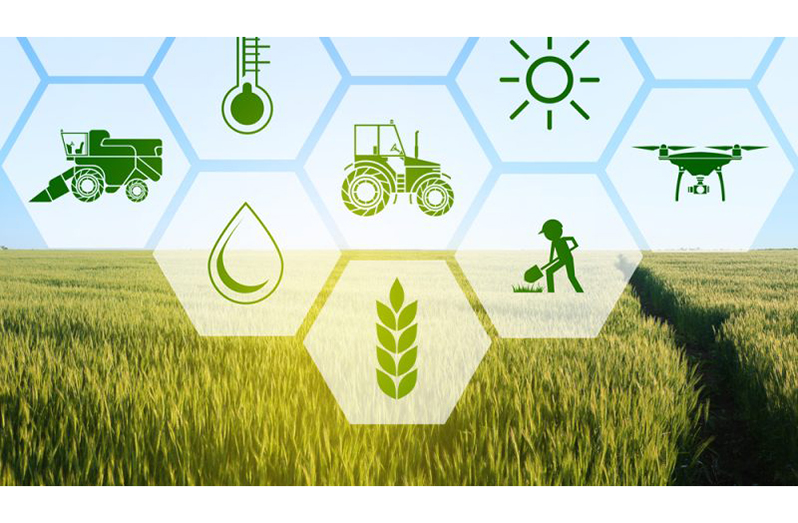– Dr. Singh outlines vision for large-scale farming industries
IN his budget presentation, Senior Finance Minister Dr. Ashni Singh stated that a substantial sum of $97.6 billion has been earmarked to facilitate a rapid transformation in the agriculture sector. This sector has been largely neglected or stagnant from 2015 to 2020.
The senior Finance Minister has affirmed that the People’s Progressive Party Civic (PPP/C) government is resolute in its efforts to cater to every aspect of the sector.
“The agriculture sector has been experiencing a rapid transformation, evolving from small-scale… subsistence-level farming enterprises as the grand stream from 2015 to 2020 to dynamic large-scale plantation scheme industries.”
Dr. Ashni Singh has affirmed that the support for investments in large-scale agriculture will persist in 2024, with a steadfast commitment to upholding the promises made in Budget 2023.
As stated by him, the realisation of this objective will involve supporting the development of modern farms that leverage technology and more efficient farming methods. This initiative also includes the expansion of arable land and the creation of pest and climate-resistant cultivars, resulting in increased agricultural productivity. Furthermore, he stated that the advancements in aquaculture, shrimp farming, crop cultivation, and livestock production are expected to experience growth.
“Organising, upgrading, and strengthening both our drainage and irrigation and farm-to-market infrastructure and support services. Furthermore, we will commission a tissue culture laboratory, which is expected to produce one million plantlets per year. This increase in production will facilitate the ready availability and easy access of planting material,” Dr. Singh added.
The Minister of Finance declared that the PPP/C government is determined to bring the agriculture sector back to life by guaranteeing that the conversion of land for harvesting will continue throughout 2024, with a target of an extra 7,100 hectares, while noting that they will in 2024 ‘contribute $6 billion to the Guyana Sugar Corporation (GuySuCo) to further improve production and operational efficiencies.’
He explained: “Additional works will be completed on Albion and Blairmont packaging plants; the installation of a sugar dryer at Blairmont estate and the rehabilitation of heavy and light duty revetment across the industry will strengthen the drainage system to allow timely delivery of harvested canes to the factories.”
Regarding the rice sector, Dr. Singh expressed their aim of securing new markets, introducing high-yielding varieties, improving farm-to-market infrastructure, enhancing irrigation and drainage systems, and adopting innovative technologies to foster growth and development in the sector.
He noted: “Our aim is to expand and develop the rice industry and serve. We are introducing new high-yielding varieties, providing adequately to improve the drainage and irrigation systems and farms to market roads, securing new markets, and introduction of new technology.”
According to the Finance Minister, an injection of $2.6 billion will enhance the “other crop” sector by promoting the cultivation of high-value crops such as cauliflower and broccoli. This development has significantly facilitated the exploration of novel market prospects.
In relation to corn and soya bean, Dr. Singh expressed that the government’s cooperation with the private sector to launch their development initiative has proven highly fruitful. Moreover, construction of an access wharf at Tacama has already commenced and is projected to be finalised by 2024.
An allocated budget of $967.8 million has been designated for enhancing the capacity of the data carva facility. Furthermore, Dr. Singh provided an explanation regarding their investment in the distribution of more than 58,000 kilograms of planting material for spices and 25,000 plantlets for the year 2024.
“Wherever we will be introducing for the first time the distribution of planting materials and spices such as nutmeg, black pepper, and cinnamon. A sum of $100 million is budgeted for these interventions,” he related.
In terms of the agro-processing sector, the aim is to enhance the value chain and broaden the market for Guyana’s products, while providing opportunities for communities and small business owners to sustain themselves.
Dr. Singh said that “additional work to advance on the construction of a cold storage facility at Bartica, solar dryers in Baracara, and Kosher canal in Kamarang are scheduled for completion in 2024. In 2024, we will continue to support the agro processing industry. We will provide training to farmers and agro processors on a large scale. We will support ports, post office management through storage facilities, we will help to expand market opportunities, including the establishment of 60 Guyana shop locations throughout the country at a sum of $527.4 million is budgeted to support agro processing.”
Furthermore, he mentioned plans for enhancing services in the poultry industry by establishing state-of-the-art processing facilities, support facilities, and production zones. There will also be upgraded quarantine stations to prevent the spread of exotic animal diseases, along with the development of 65-acre pasture plots to increase production. All of these initiatives are expected to be implemented by 2024, with a projected budget of $1.5 billion. Dr. Ashni Singh, discussing fisheries, assured that their commitment to investing in blackish water and developing cage culture will persist. He mentioned that there are plans to set up a fish feed mill in Mon Repos, located on the East Coast Demerara.
The purpose of this mill is to provide support for the production of both floating and sinking feed for fish and shrimp. He stated that the feed mill’s current projected production capacity is two tonnes per hour, which is sufficient for both present demand and future requirements. Furthermore, a budget of $1.2 billion has been assigned for the development of fisheries and aquaculture initiatives in 2024. In addition, he shared that the development of canals resembling Hope in Regions Five and Six will start soon. Anticipated budget allocation will benefit a large number of farmers and locals.



